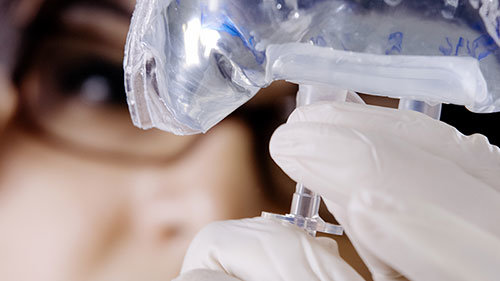What You Need to Know About IVIg
IVIg is short for intravenous immune globulin, a life-saving therapy treatment used to aid those with a weakened immune system and other diseases. Subcutaneous immune globulin (SCIg) is a treatment method that delivers immune globulin into the system by injecting into fatty tissue below the skin. Immune globulin that has been isolated from healthy blood plasma received from donors is made into a sterile solution that is then administered to patients intravenously. According to the National Center for Biotechnology Information (NCBI), each batch of IVIg contains the serum of 10,000 to 15,000 blood donors.
Understanding immune globulin

Immune globulin (Ig for short) is a protein found in the blood that is as important to your body as nutrients and oxygen and is a necessary part of the immune system. Ig combats antigens that enter the body including bacteria, viruses, and toxins. Without them, the body has a difficult time protecting its systems from infections and diseases. Unfortunately, some diseases directly attack the body’s antibodies or impact its ability to create them, weakening the immune system. Fortunately, a treatment has been developed to help those with immune system disorders.
Whom does IVIg therapy benefit?
Those with immune deficiencies unable to produce enough (or any in some cases) antibodies to fight off antigens. As a result, the body becomes susceptible to infections and inflammation. Patients diagnosed with chronic inflammatory demyelinating polyneuropathy (CIDP), multiple sclerosis, and myasthenia gravis disease are common recipients of IVIg therapy. In some cases, IVIg is also used to treat patients with autoimmune deficiencies like Lupus and myositis (conditions that cause inflammation).
How does IVIg work and how is it administered?
The immune globulin is delivered directly into the bloodstream intravenously through a catheter on your arm or through a central line in the chest area. A trained and licensed medical professional, such as a certified IV nurse, must administer the treatment at either a local infusion center or through an at-home service. Alternatively, Ig can be administered subcutaneously at home or at an infusion center. IVIg patients may also eventually transition to self-administer the treatment subcutaneously at home after training with a nurse. It may take approximately three hours to complete the IVIg infusion therapy with treatment intervals ranging between days and weeks as determined by your doctor.
If you are interested in taking immune globulin to treat an immunodeficiency, be sure to speak to your doctor to discuss possible side effects, your medical history, and your current prescriptions to ensure that you are an eligible candidate.